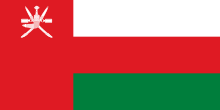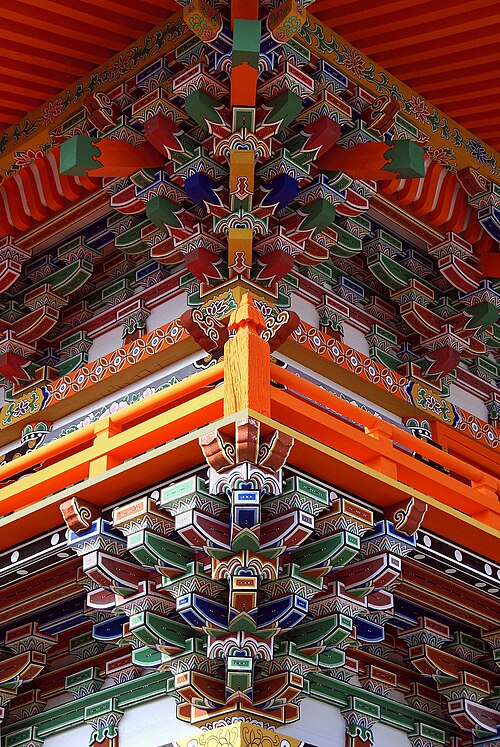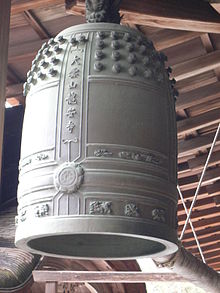Portal:Asia

 Asia (/ˈeɪʒə/ ⓘ AY-zhə, UK also /ˈeɪʃə/ AY-shə) is the largest continent in the world by both land area and population. It covers an area of more than 44 million square kilometers, about 30% of Earth's total land area and 8% of Earth's total surface area. The continent, which has long been home to the majority of the human population, was the site of many of the first civilizations. Its 4.7 billion people constitute roughly 60% of the world's population. Asia shares the landmass of Eurasia with Europe, and of Afro-Eurasia with both Europe and Africa. In general terms, it is bounded on the east by the Pacific Ocean, on the south by the Indian Ocean, and on the north by the Arctic Ocean. The border of Asia with Europe is a historical and cultural construct, as there is no clear physical and geographical separation between them. It is somewhat arbitrary and has moved since its first conception in classical antiquity. The division of Eurasia into two continents reflects East–West cultural, linguistic, and ethnic differences, some of which vary on a spectrum rather than with a sharp dividing line. A commonly accepted division places Asia to the east of the Suez Canal separating it from Africa; and to the east of the Turkish Straits, the Ural Mountains and Ural River, and to the south of the Caucasus Mountains and the Caspian and Black seas, separating it from Europe. China and India traded places as the largest economies in the world from 1 to 1800 CE. China was a major economic power for much of recorded history, with the highest GDP per capita until 1500. The Silk Road became the main east–west trading route in the Asian hinterlands while the Straits of Malacca stood as a major sea route. Asia has exhibited economic dynamism as well as robust population growth during the 20th century, but overall population growth has since fallen. Asia was the birthplace of most of the world's mainstream religions including Hinduism, Zoroastrianism, Judaism, Jainism, Buddhism, Confucianism, Taoism, Christianity, Islam, Sikhism, as well as many other religions. (Full article...) Featured articleBonshō (梵鐘, Buddhist bells), also known as tsurigane (釣り鐘, hanging bells) or ōgane (大鐘, great bells) are large bells found in Buddhist temples throughout Japan, used to summon the monks to prayer and to demarcate periods of time. Rather than containing a clapper, bonshō are struck from the outside, using either a handheld mallet or a beam suspended on ropes. The bells are usually made from bronze, using a form of expendable mould casting. They are typically augmented and ornamented with a variety of bosses, raised bands and inscriptions. The earliest of these bells in Japan date to around 600 CE, although the general design is of much earlier Chinese origin and shares some of the features seen in ancient Chinese bells. The bells' penetrating and pervasive tone carries over considerable distances, which led to their use as signals, timekeepers and alarms. In addition, the sound of the bell is thought to have supernatural properties; it is believed, for example, that it can be heard in the underworld. (Full article...)Selected Country Oman, officially the Sultanate of Oman, is a country in West Asia. It is located on the southeastern coast of the Arabian Peninsula, and overlooks the mouth of the Persian Gulf. It shares land borders with Saudi Arabia, the United Arab Emirates, and Yemen, while sharing maritime borders with Iran and Pakistan. The capital and largest city is Muscat. Oman has a population of nearly 4.7 million and is the 124th most-populous country. The coast faces the Arabian Sea on the southeast, and the Gulf of Oman on the northeast. The Madha and Musandam exclaves are surrounded by United Arab Emirates on their land borders, with the Strait of Hormuz (which it shares with Iran) and the Gulf of Oman forming Musandam's coastal boundaries. From the 17th century, the Omani Sultanate was an empire, vying with the Portuguese and British empires for influence in the Persian Gulf and the Indian Ocean. At its peak in the 19th century, Omani influence and control extended across the Strait of Hormuz to Iran and Pakistan, and as far south as Zanzibar. In the 20th century, the sultanate came under the influence of the United Kingdom. For over 300 years, the relations built between the two empires were based on mutual benefit. The UK recognized Oman's geographical importance as a trading hub that secured British trading-lanes in the Persian Gulf and Indian Ocean and protected London's interests in the Indian sub-continent. Oman is an absolute monarchy led by a sultan, with power passed down through the male line. Qaboos bin Said was the Sultan from 1970 until his death on 10 January 2020. Qaboos, who died childless, had named his cousin, Haitham bin Tariq, as his successor in a letter, and the ruling family confirmed him as the new Sultan of Oman. (Full article...)Featured biographyYao Ming (Chinese: 姚明; born September 12, 1980) is a Chinese basketball executive and former professional player. He played for the Shanghai Sharks of the Chinese Basketball Association (CBA) and the Houston Rockets of the National Basketball Association (NBA). Yao was selected to start for the Western Conference in the NBA All-Star Game eight times, and was named to the All-NBA Team five times. During his final season, he was the tallest active player in the NBA, at 7 feet 6 inches (2.29 m). Yao, who was born in Shanghai, started playing for the Sharks as a teenager, and played on their senior team for five years in the CBA, winning a championship in his final year. After negotiating with the CBA and the Sharks to secure his release, Yao was selected by the Rockets as the first overall pick in the 2002 NBA draft. He reached the NBA playoffs four times, and the Rockets won the first-round series in the 2009 postseason, their first playoff series victory since 1997. In July 2011, Yao announced his retirement from professional basketball because of a series of foot and ankle injuries which forced him to miss 250 games in his last six seasons. In eight seasons with the Rockets, Yao ranks sixth among franchise leaders in total points and total rebounds, and second in total blocks. (Full article...)General imagesThe following are images from various Asia-related articles on Wikipedia. Featured picture Credit: 663highland A colorful dougong supporting a structure at Sagami Temple, Kasai, Hyōgo, Japan. Dougong is a structural element of interlocking wooden brackets, one of the most important elements in traditional Chinese, Japanese, and Korean architecture. The use of dougong first appeared in buildings of the late centuries BC and evolved into a structural network that joined pillars and columns to the frame of the roof. The pieces are fit together by joinery alone without glue or fasteners, due to the precision and quality of the carpentry.
Did you know...
Updated: 6:33, 14 February 2024 In the news
Related portalsMajor Religions in Asia Middle East Central Asia and Surroundings Indian Subcontinent Southeast Asia East Asia Selected panoramaAlong the River During the Qingming Festival is a painting from China's Song Dynasty that captures the daily life of people from the period at the capital, Bianjing, today's Kaifeng. As an artistic creation, the piece has been revered, and court artists of subsequent dynasties have made several re-interpretive replicas. The painting is famous because of its geometrically accurate images of boats, bridges, shops, and scenery. Because of its fame, it has been called "China's Mona Lisa". TopicsCategoriesAssociated WikimediaThe following Wikimedia Foundation sister projects provide more on this subject:
More portalsShortcuts to this page: Asia portal • P:ASIA Purge server cache |






























































































